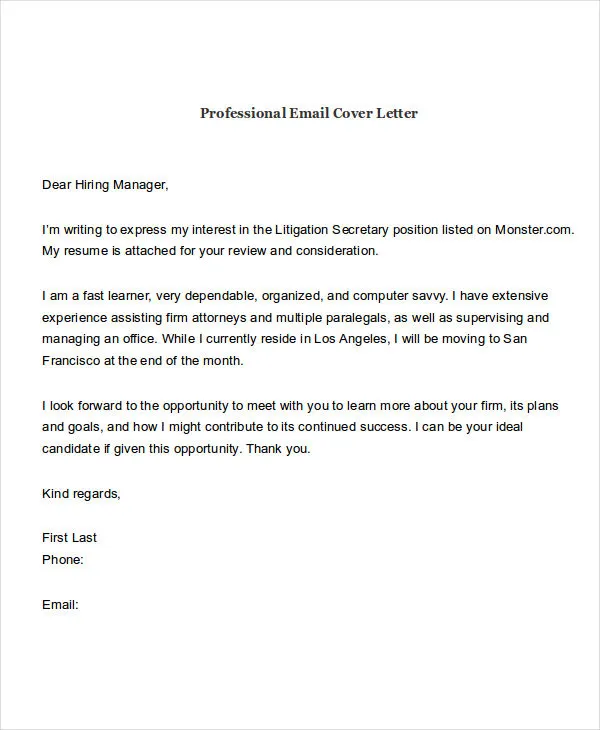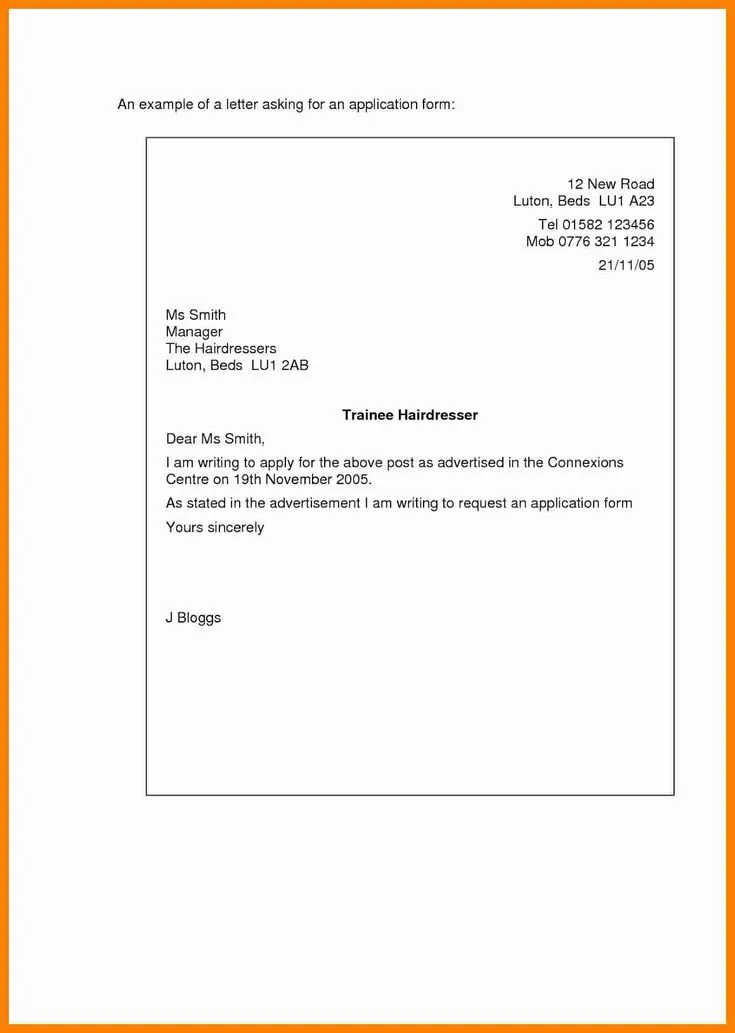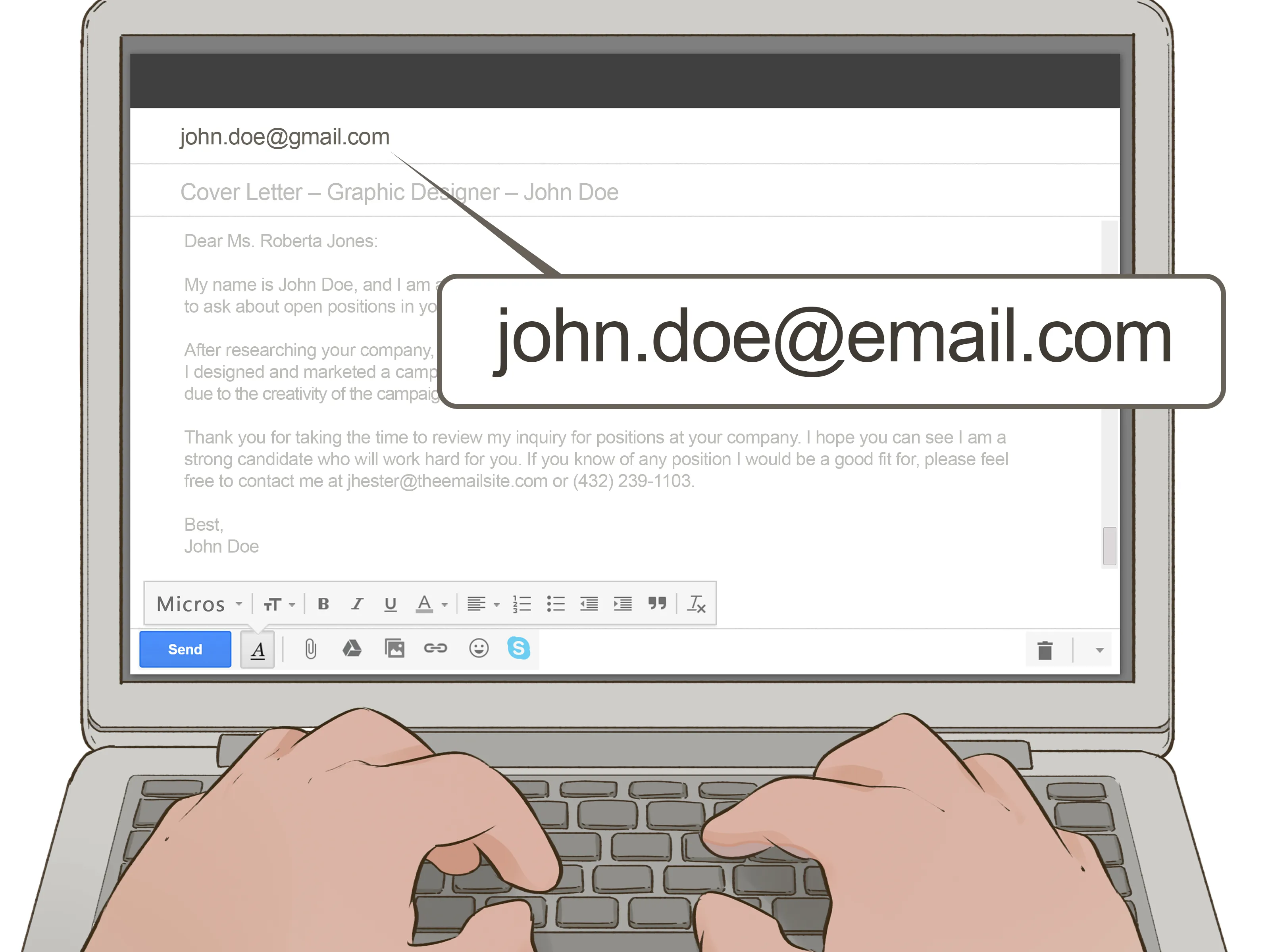Sending your resume and cover letter via email is often the first impression you make on a potential employer, making it crucial to do it right. A well-crafted email can significantly increase your chances of landing an interview. It’s about more than just attaching documents; it’s about presenting yourself professionally and making a positive impact. This guide provides seven essential tips to ensure your email stands out for all the right reasons. By following these steps, you can significantly enhance your job application and increase your chances of securing an interview.
Crafting the Perfect Subject Line
The subject line is the first thing a hiring manager sees, making it your initial opportunity to capture their attention. It should be clear, concise, and professional. Avoid generic subject lines like “Resume” or “Job Application.” Instead, include your name and the position you are applying for. For example, “Jane Doe - Application for Marketing Manager.” If the job posting specifies a particular subject line format, adhere to it precisely. This demonstrates your attention to detail and respect for the employer’s instructions. Keep it brief, specific, and easy to understand at a glance. Using a well-crafted subject line increases the likelihood that your email will be opened and read.
Personalizing Your Email to the Recipient
A generic email is easily dismissed. Personalize your email to demonstrate that you’ve researched the company and are genuinely interested in the role. Start with a professional greeting, such as “Dear Mr./Ms./Mx. [Last Name],” whenever possible. Avoid overly casual greetings. In the body of the email, briefly mention why you are interested in the specific company and the position. Tailor your message to highlight the skills and experiences most relevant to the job description. If you have a connection, such as someone who referred you, mention it. This personalization shows that you’ve taken the time to go beyond a mass application and are truly invested in the opportunity, showing that you care about the role and the company.
Attaching Your Resume and Cover Letter Correctly

Properly attaching your resume and cover letter is critical. Ensure that both documents are attached as professional PDF files. PDFs maintain the formatting of your documents across different devices and operating systems, ensuring that the hiring manager sees your resume and cover letter as intended. Use clear and descriptive filenames, such as “JaneDoe_Resume.pdf” and “JaneDoe_CoverLetter.pdf.” Avoid ambiguous filenames that could confuse the recipient. Always double-check that the correct files are attached before sending your email. This attention to detail reflects your professionalism and organizational skills. Verify file sizes to confirm they are within acceptable limits to avoid delivery issues.
Formatting Your Resume & Cover Letter
While this tip focuses on the documents themselves, it’s relevant because your formatting directly impacts readability. Your resume and cover letter should be impeccably formatted. Use a clean, easy-to-read font like Arial, Calibri, or Times New Roman in a standard size (11 or 12 points). Maintain consistent formatting throughout both documents. Use clear headings, bullet points, and white space to make the content easy to scan. Avoid excessive use of bolding, italics, or underlining. Ensure your documents are free of typos and grammatical errors. A well-formatted resume and cover letter are a sign of professionalism, respect for the reader, and care in your application.
Writing a Compelling Email Body
The body of your email should be a concise introduction to your application. Start with a brief greeting, referencing the job title and where you found the position. State your interest in the role and the company. Highlight a few key skills or experiences that make you a strong candidate. Think of the email body as a teaser for your resume and cover letter. Encourage the hiring manager to read your attached documents. Express your enthusiasm for the opportunity and your availability for an interview. Keep the email brief, typically no more than four or five short paragraphs. End with a professional closing, such as “Sincerely” or “Best regards,” followed by your full name.
Proofreading and Editing Before Sending

Before hitting the send button, proofread your entire email, including the subject line, email body, and filenames. Errors in grammar, spelling, or punctuation can create a negative impression and undermine your qualifications. Read your email aloud to catch any awkward phrasing or typos that you might miss when reading silently. If possible, have a friend or family member review your email for a second opinion. Check the recipient’s email address to ensure you have the correct contact. Even a small mistake can damage your chances. Take the time to ensure every detail is perfect before sending your application. Use tools like Grammarly or similar applications to assist in the proofreading process. Proper proofreading is an essential step in your job application process.
Following Up After Emailing Your Documents
Following up appropriately can demonstrate your continued interest in the position. After sending your email, wait a reasonable amount of time (typically 5-7 business days) before following up. Send a polite email reiterating your interest and asking if the hiring manager has had a chance to review your application. Keep the follow-up email concise and professional. Avoid being overly persistent or demanding. If you don’t receive a response after a second follow-up, it’s usually best to assume they have chosen another candidate. Thank the hiring manager for their time and consideration. Following up shows that you are proactive and genuinely interested in the role. However, it’s crucial to strike the right balance to avoid appearing overly eager or pushy. Always be respectful of the hiring manager’s time.
Emailing your resume and cover letter is an art. By following these seven tips – crafting the perfect subject line, personalizing your email, attaching documents correctly, formatting them professionally, writing a compelling email body, proofreading thoroughly, and following up appropriately – you can significantly boost your chances of getting noticed and securing an interview. Remember to be professional, pay attention to detail, and show genuine interest in the opportunity. Good luck with your job search!
